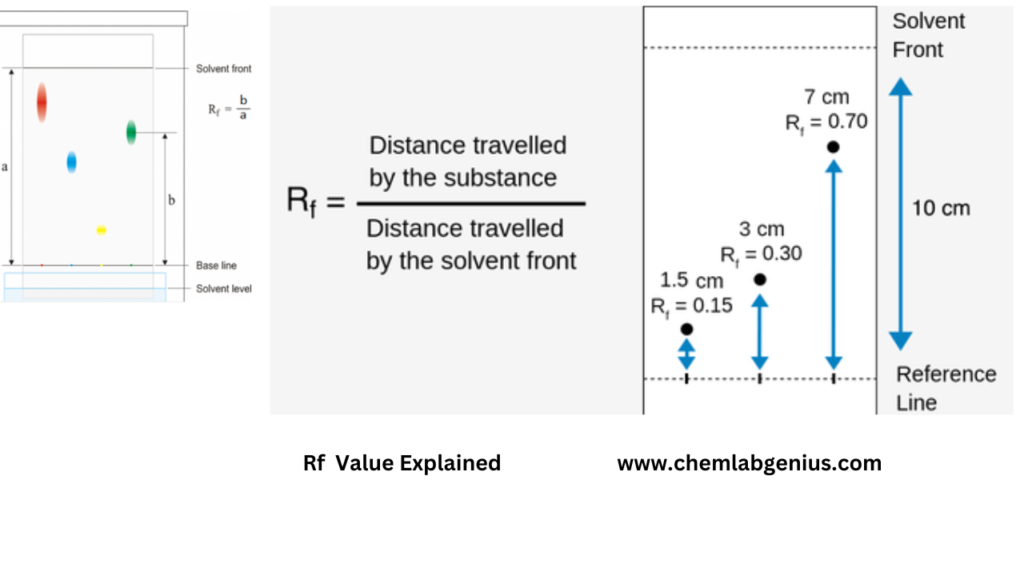
The Rf value (retardation factor/Retention Factor) is an important parameter in chromatography that represents the distance traveled by a particular compound relative to the distance traveled by the solvent front.
The Rf value is a dimensionless number that ranges from 0 to 1. It is calculated by dividing the distance traveled by the compound by the distance traveled by the solvent front. The resulting Rf value represents the relative mobility of the compound in the chromatogram.

The Rf value can be calculated using the following formula:
Rf = distance traveled by the compound / distance traveled by the solvent front
The distance traveled by the compound is measured from the origin to the center of the spot, while the distance traveled by the solvent front is measured from the origin to the solvent front.
The Rf value is an essential parameter in chromatography because it allows for the identification and analysis of individual components in a mixture. By comparing the Rf values of an unknown sample to those of known compounds, scientists can determine the identity of the unknown compound.
The Rf value also provides information on the polarity of the compound. Polar compounds tend to have a lower Rf value, while nonpolar compounds tend to have a higher Rf value. This information can be useful in determining the chemical properties of a compound.
The Rf value is influenced by various factors, including:
A good Rf value is one that is consistent with the known Rf values of the compound under the same experimental conditions. However, there is no universal “good” Rf value, as it can vary depending on the system and the compound being analyzed.
Yes, two compounds can have the same Rf value if they have similar chemical properties and interact similarly with the stationary and mobile phases in the chromatography system.
No, the Rf value cannot be greater than 1. If the compound travels farther than the solvent front, it may have been over-spotted or over-applied, or the solvent system may not be appropriate for the compound.